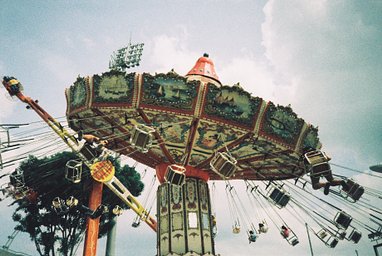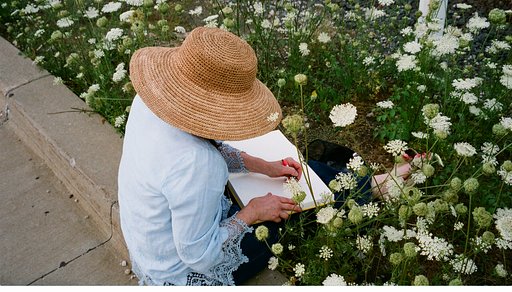What is cross processing?
Cross processing (or “X-pro”) is the procedure of deliberately processing film in a chemical solution intended for a different type of film. As each chemical mixture is optimized for a specific kind of film, you will get unpredictable results when combining them differently.
The most common type of cross processing is done in color photography, switching the chemicals for C-41 (color negative) and E-6 (color positive/slide). By cross processing in this way we can achieve interesting shifts in color and contrast.
If you process slide film in the negative chemicals (C-41), you will get negative film, but with the Lomographic burst of color and other unexpected results! The photos often turn out saturated, grainy or with high contrast. Different films have different characteristics when cross-processed. Some turn out more yellow or green while others turn purple or red.




If you process negative film through the slide chemicals (E-6), you will get slides. The colors will not be too wacky; you will just get a kind of slide film with no big color shifts but an overall overcast of different color depending on the film. And if you cross process our LomoChrome Purple film it turns bright blue!


Anything missing?
Can’t find an answer to your question? Or do you have some useful advice to add to one of our courses? We want to build the world’s largest analogue learning space, so please send any further requests or information to school@lomography.com and we’ll take a look!
Photos From Other Students
Do you want to see your photos featured here for all Lomo School students to see? If you think your photos fit this article just tag them with “xpro”. We take a look at all these photos and select our favorites. See all photos tagged with “xpro” here.
More Courses
-
What are some tips for creating LomoWalls?
Planning to create your own physical LomoWall soon? Here are some tips to consider while making your version of a classic Lomography mosaic!
-
What is a Lomographic picture?
A Lomographic picture usually mixes the golden rules of Lomography and a few of the defining characteristic styles. However, nowadays a Lomographic picture is entirely up to your own creativity.
-
What are the different photographic film formats?
The three main types of film format are 35 mm, medium format and large format. More unusual formats also exist such as 110 and 127.
-
What is a negative?
A negative is an image that is an inversion of the original. The colors are reversed and areas of the photograph that were light now appear dark, and vice versa.
-
How do you create a LomoWall at home?
Here’s the process of creating your own LomoWalls at home, from allocating space, to designing and printing your photos!
-
What is tungsten film?
Most standard films are daylight-balanced, so they tend to capture the yellow-orange cast from tungsten lights. To address this, tungsten film was created to produce color-correct images taken under artificial lighting.
-
What is a LomoWall?
A LomoWall is a vibrant and colorful artwork that utilizes analogue photography to celebrate the talent and diversity of countries, cultures and people. This record-breaking and collaborative practice has always been an important part of our story.
-
What is 126 film?
126 film was launched by Kodak in 1963 as a way to simplify the process of loading and unloading film into cameras. Its name comes from the negatives’ dimension of 26.5 mm square. Although companies ceased mass production of 126 format around 2007 to 2008, its cartridge is still known and loved today.
-
What is APS film?
Advanced Photo System or APS film was introduced in 1996 as a “high-tech” or modern alternative to the 126 and 110 film formats. It was 24 mm wide and it introduced many innovations, like the ability to choose exposure lengths and print sizes. Production of new APS film was ceased in 2011.


























